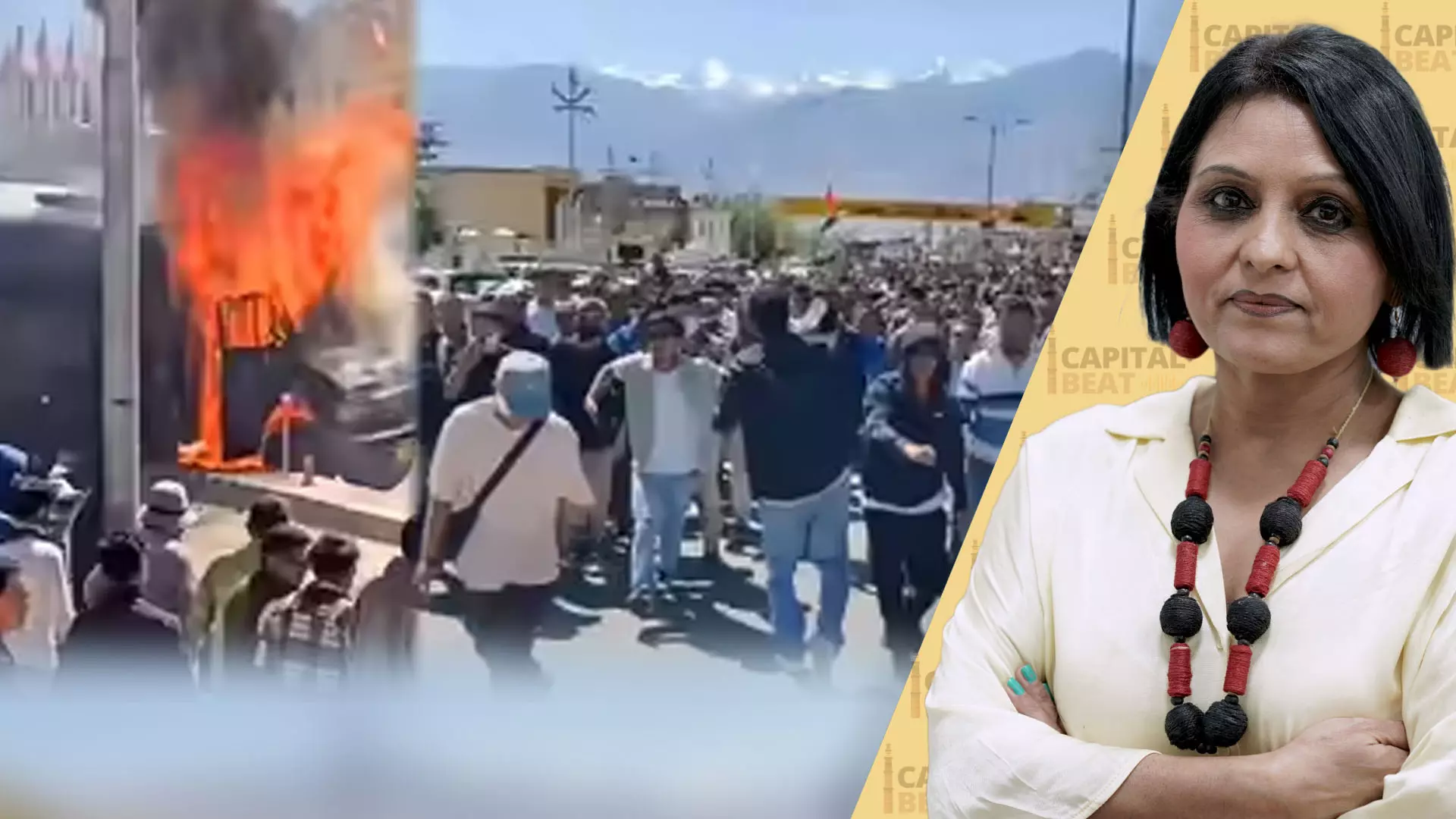
What led to Leh protests and subsequent violence? |Capital Beat
BJP office set ablaze, four killed, scores injured — will Sixth Schedule safeguards and statehood end Ladakh’s unrest?

The Federal's Capital Beat featured National Conference leader and lawyer Nilofar Masood and veteran journalist Suhail Kazmi in a discussion on the violent protests in Leh, Ladakh. The unrest, which escalated from a hunger strike, has left four people dead and many injured. Protesters set afire the Bharatiya Janata Party (BJP) office and a Central Reserve Police Force (CRPF) van, forcing authorities to impose curfew in the Union Territory’s capital.
Protest turns violent in Leh
Demonstrations in Leh had been ongoing for weeks, with protesters demanding statehood, inclusion in the Sixth Schedule, and protection of Ladakh’s tribal identity. The situation escalated when 15 hunger strikers were hospitalised due to deteriorating health. On Wednesday, groups of youths pelted stones, leading to police firing tear gas shells and using baton charges. The violence caused extensive damage and brought the city to a standstill.
Also Read: Why did Ladakh explode in anger?
Nilofar Masood stated, “They have been asking for statehood, protection of tribal rights, and inclusion under the Sixth Schedule, but nothing has been delivered for six years. This frustration has now turned into unrest.”
Historical background of demands
Ladakh was carved out as a Union Territory in August 2019 following the abrogation of Article 370 and the bifurcation of Jammu and Kashmir. Unlike Jammu and Kashmir, Ladakh was left without a legislature, placing it directly under central rule. Since then, local groups including the Leh Apex Body and the Kargil Democratic Alliance have pressed for constitutional safeguards to preserve Ladakh’s environment and identity.
Climate activist Sonam Wangchuk has been at the forefront of recent protests, leading a hunger strike since September 10. The groups had been preparing for another round of talks with the Centre scheduled for October 6. Their key demands include statehood and Sixth Schedule protections, which grant tribal areas autonomy in matters of land, forests, and governance.
Questions over trigger for violence
Suhail Kazmi noted that while protests had been largely peaceful until now, Wednesday’s escalation resembled sudden eruptions seen in other regions. He highlighted that names of certain Ladakh representatives, including Sonam Wangchuk and Congress leader Namgyal Rigzin Jora, were removed from the upcoming October 6 talks with the Union Home Ministry. This exclusion, he said, may have contributed to the unrest.
An emergency meeting of local activists and student leaders was convened as violence spread. Connectivity disruptions in Leh further hindered communication, making it difficult to coordinate responses or verify ground reports. Authorities have since banned public gatherings under Section 144 and restricted protests.
SIT probe initiated
Kazmi confirmed that the Lieutenant Governor of Ladakh has ordered the constitution of a Special Investigation Team (SIT) to probe the violence. Law enforcement agencies, including the Ladakh Police, have tightened security across sensitive areas to prevent further escalation. While no arrests had been confirmed by Wednesday evening, officials were investigating the role of fringe elements in instigating mob violence.
Both panellists pointed out that the demands for representation and local autonomy are rooted in democratic rights. Masood emphasised, “You cannot keep Ladakh without a legislature. This is injustice to its people.”
Security and external concerns
Given Ladakh’s strategic location bordering China, security concerns remain high. Authorities are monitoring the situation closely, considering possible attempts by external forces to exploit the unrest. The District Magistrate has imposed restrictions on rallies and protests, warning against activities that could affect peace and stability in the region.
Meanwhile, youth participation in the protests has drawn attention to local grievances over employment and resources. While the Centre has invested in infrastructure and connectivity projects in Ladakh, discontent persists among residents who feel excluded from decision-making and economic benefits.
Calls for dialogue
The protests have once again underscored the gap between Ladakh’s aspirations and the Centre’s response. Although talks with the Union Home Ministry are scheduled, the recent violence is likely to impact the process. Both the Leh Apex Body and the Kargil Democratic Alliance remain central to negotiations, while activist groups continue to demand immediate measures to build trust.
The content above has been transcribed from video using a fine-tuned AI model. To ensure accuracy, quality, and editorial integrity, we employ a Human-In-The-Loop (HITL) process. While AI assists in creating the initial draft, our experienced editorial team carefully reviews, edits, and refines the content before publication. At The Federal, we combine the efficiency of AI with the expertise of human editors to deliver reliable and insightful journalism.

